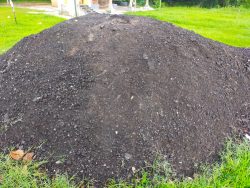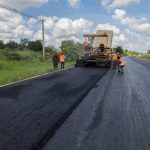What Are Common Aggregates Used in Asphalt Pavement?
 What Are Common Aggregates Used in Asphalt Pavement?
What Are Common Aggregates Used in Asphalt Pavement?
A key component of paving, aggregate is primarily responsible for the load-supporting capacity of a pavement. Aggregates come in many forms, including sand, gravel and crushed stone.
Natural Or Uncrushed
Aggregates are hard, inert materials that can be mined from a variety of sources. They include gravel, sand, and crushed stone. These materials can be used in asphalt applications to either be mixed with the asphalt binder or as a standalone product. They must have the right properties to ensure a high-quality paving mix. For example, a good aggregate can be found in areas that have geological makeup that includes bedrock-quality stones such as granite, marble, limestone and other similar types of stone. The aggregate must also have the proper gradation, density and void content to prevent rutting or raveling of the pavement surface. Proper mix design also is essential for achieving the desired properties. Choosing the correct type of asphalt aggregate for a road or street depends on its purpose and traffic load. For example, a township road may be able to use lower-quality local aggregates, while a primary highway or interstate must use high quality materials that can handle the higher loads.
The Screening Process
The best way to determine the proper aggregate size is to employ a screening process to separate the larger from the smaller. This will allow for the best possible final product, as well as avoiding unnecessary waste material at the kerb or in the gutter. Several methods are used to achieve this goal, including vibrating screens and gravity feed systems. One of the most effective is a multi-stage crushing system using a combination of impact, compression and shear. This technology can produce a finely crushed, low void and low silica containing aggregate in a fraction of the time of traditional processes.
Affinity
The aggregates used in the pavement surface course and underlying subbase course should have high resistance to crushing, wear and tear and to withstand the stress caused by the heavy traffic wheel load. The aggregates should also be resistant to abrasion due to the movement of steel tired vehicles from one aggregate to another. That being said, aggregates used in asphalt mixtures should have an affinity with the binder to ensure adequate bonding between aggregate and asphalt. This is important in order to prevent stripping and rutting of the road surface. This affinity can be determined by performing tests on the chemical composition of different aggregates and their effect on asphalt adhesion. Among the tested materials, alkaline rock-dolomite and waste ceramic aggregate have the highest affinity with the asphalt. Comparatively, the affinity of sanitary ceramics and granodiorite is lower.
Angular Aggregates
Aggregate is a critical ingredient in asphalt pavements, and the proper gradation of aggregate particles determines its workability, strength characteristics and compactability. Size and shape of the particles are also important factors. For example, rounded aggregates have less internal friction and move closer together within the layer under less compaction energy than angular aggregates. This is why mixes containing rounded aggregates tend to be unstable and move around under the weight of the compactor. On the other hand, angular aggregates have high internal friction and produce a very strong asphalt pavement. This is why more force and heavier compactors are needed to overcome the friction between the fractured faces of crushed stone aggregate.
More...
Categorised in: Aggregates, Asphalt Mix




